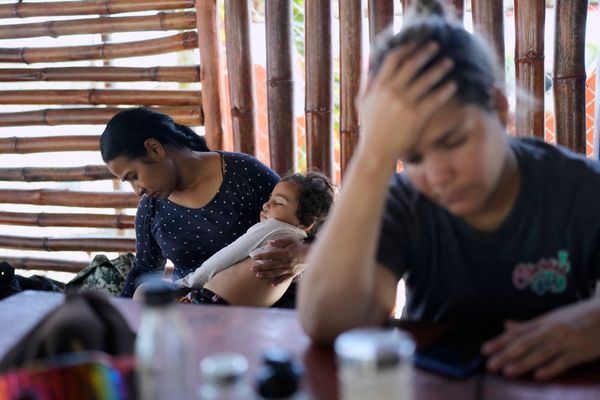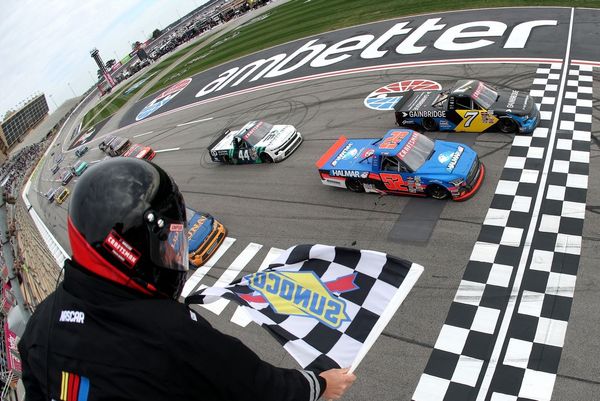It was while working in hot, humid, conditions in full COVID-protective clothing in the hangar and in the air that Amanda Quinn realised her team needed more help cooling down.
The CareFlight northern operations nursing director is used to hot skies and hot bitumen, but a cultural shift was needed.
"We operate in an austere environment in the Top End of Australia, and out on the tarmac, it can be in excess of 50 degrees Celsius," she said.
"We needed to look as an organisation at how we mitigate heat stress and keep our employees safe."
An extra crew member is now added to complex missions.
"We put on an extra shift during the day also to help people manage their fatigue and heat stress and swap out if required," she said.
"Heat stress is a big factor in our role."
This decision was solidified during recent extreme heatwave conditions in northern Australia, as new minimum October temperature records were set.
A trough moved into the Top End and Carpentaria District and combined with humid westerly winds to create an oppressive environment.
The Bureau of Meteorology's highest temperature recorded was 44.4 degrees at Victoria River Downs.
Crush ice, not spirits
Apart from standard hydration, nutrition, and heat warning messages, there's also a crushed ice machine in the crib room and battery-powered ice vests ready to wear by frontline staff at a moment's notice.
"We've really tried to move away from that, 'It's the Territory. That's just how it is. It's hot', attitude," Ms Quinn said.
'Some people think I'm crazy'
Heat stress scientist Matt Brearley busts myths and investigates how athletes and workers manage heat.
He travels across northern Australia studying and helping work crews work efficiently in austere environments.
"It's so hot. It's not impacting us just at work. It's impacting our family life, how we interact with each other, our moods, our general enjoyment of life, and our wellbeing," Dr Brealey said.
"You can actually manage this. You don't have to have headaches and feel rubbish every day throughout the build-up and wet season. There's a different way.
"You can enjoy this time of year. I know some people think I'm crazy."
More workers, more cooling
Dr Brearley's advice to managers is to have more workers to share hot workloads, more cooling methods available immediately to hand, and more education.
He was warned about "suicide season", "mango madness", and "going troppo" on arrival to the NT in 2001.
His research proved hot and humid weather was linked to increases in trauma mortality.
"The do-nothing scenario is we just keep soldiering on," Dr Brealey said.
"We keep having related incidents, and we basically treat each other quite poorly due to feeling so hot, uncomfortable, and over it."
Real Territorians are cool
Dr Brearley says if Territorians want to beat the heat, they need to lose the "macho attitude" and prioritise "dumping heat".
"We need to change our behaviour," he said.
"But if we actually manage the heat, we don't stay out in the heat and use it as a badge of honour when we collapse or use how many times we've been in the hospital as a sign of toughness.
"Tough people get the job done, and getting the job done requires management of heat and not cooking."
Dr Brearley said if people were able to cool down when they were fishing, hunting or camping, it would be more enjoyable.
"And when we play sport, if we can get warm and then cool down straight after, we could probably enjoy the time after the event as well," he said.
Not working nine-to-five
Dr Brearley's solutions are more workers on jobs and more diverse cooling methods such as air conditioning, slushies, or ice towels.
But working at night always wins.
"Nine-to-five is obviously the hottest period of the day of the 24-hour cycle," he said.
"Starting much earlier is something to consider and something I'd urge."
Asked about strategies for dealing with extreme heat, an NT Worksafe spokesperson said people should seek the agency's online sources.
"The key message is to plan ahead and ensure all necessary measures for preventing heat illness can be implemented when hot weather is predicted for workers and/or the workplace," the spokesperson said.







